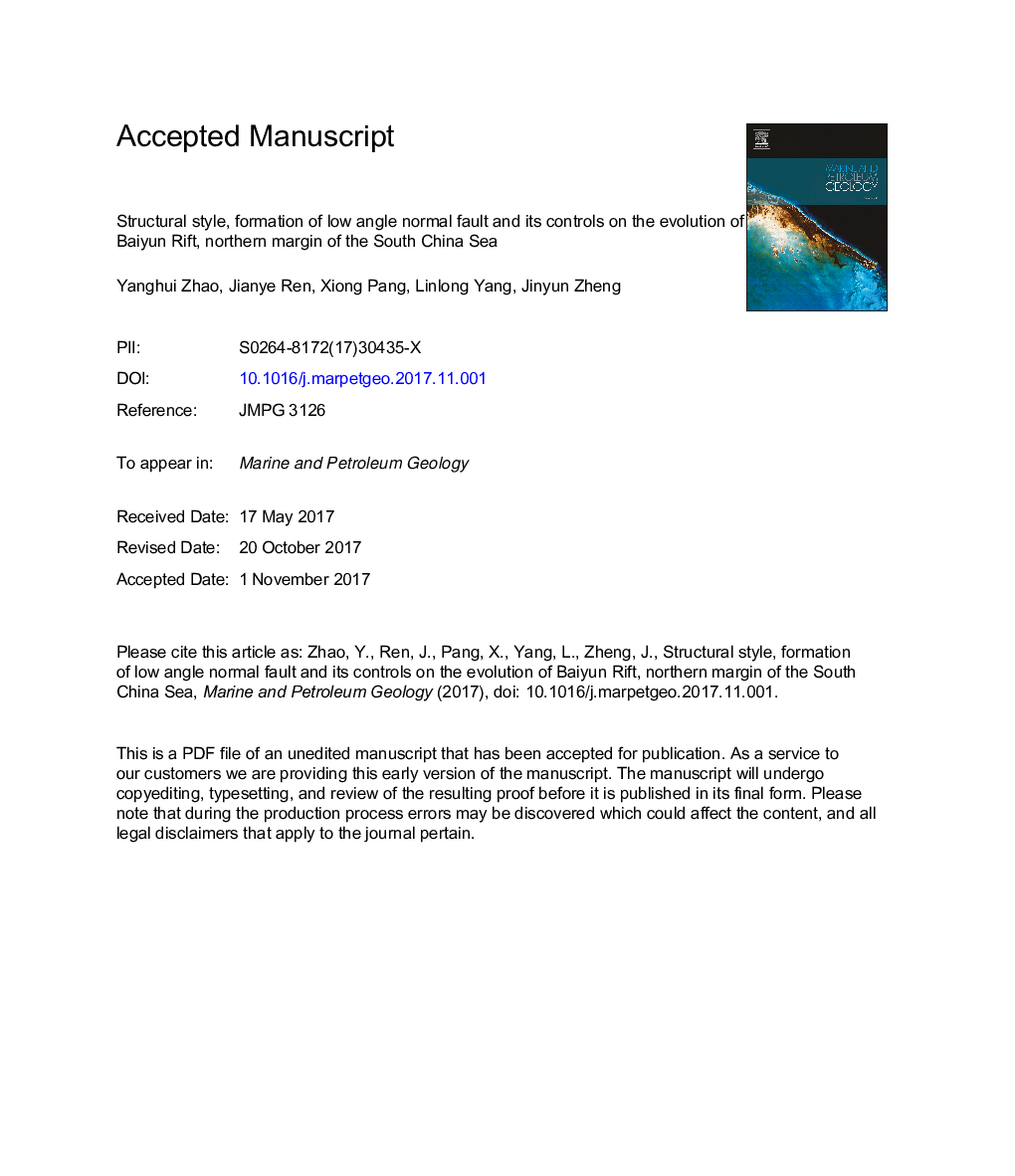| Article ID | Journal | Published Year | Pages | File Type |
|---|---|---|---|---|
| 8909269 | Marine and Petroleum Geology | 2018 | 57 Pages |
Abstract
Recent studies of high-resolution seismic reflection profiles in the northern rifted margin of the South China Sea revealed that low angle normal faults dominated the structural evolution of deepwater basins rather than high angle normal faults solely as was previously assumed; however, none of the studies proposed kinematic restorations of the fault system and the relationship to continental margin formation. The Baiyun Rift is located in the slope of the northern margin of the South China Sea underlain by extremely thinned continental crust. It is filled with a relatively complete sequence of Cenozoic sediments up to 10 km and has been considered the best-documented deepwater basin. Basin-wide 3D seismic data together with the available deepwater well data have allowed the structural framework to be built and tectono-stratigraphic history of the Baiyun Rift to be traced in detailed from the rift stage; a quantitative study of the primary geometry and kinematics of the major faults can be performed consequently. Results show the inception of the rift is characterized by faults slipped at high angles; the later stage (mid-Eocene) of intensive extension is dominated by a fault system with large horizontal displacements (>10 km) and initial low dips (<30°). The observations can be best explained by a low angle normal faulting (faults started out at shallow angles during mid-Eocene or being rotated from high angles) following a scattered high angle normal faulting. As a consequence, the polyphase faulting created a large accommodation space vertically and horizontally and formed a deep and wide shape of the Baiyun Rift. Besides, the phenomenon that the cessation of the rift in the Baiyun Rift predated the final breakup of the continental margin suggests the timing of the rifting events along the northern margin of the South China Sea is non-instantaneous. This study implies the progressive deformation dominated by low angle normal faulting causes an uneven distribution of the continental crustal thickness and may favor the breakup location in the northern South China Sea.
Related Topics
Physical Sciences and Engineering
Earth and Planetary Sciences
Economic Geology
Authors
Yanghui Zhao, Jianye Ren, Xiong Pang, Linlong Yang, Jinyun Zheng,
